Node Assignment Problem

The problem I want to solve is to tessellate the map given with the Blue Nodes(Source Nodes) as given input points, Once I am able to do this I would like to see how many Black Nodes(Demand Nodes) fall within each cell and assign it to the Blue Node associated with that cell.
I would like to know if there is a easier way of doing this without using Fortune's Algorithm.I came across this function under Mahotas called Mahotas.segmentation.gvoronoi(image)source. But I am not sure if this will solve my problem.
Also please suggest me if there is a better way of doing this segmentation(other than Voronoi tessellation). I am not sure if clustering algorithms would be a good choice. I am a programming newbie.

